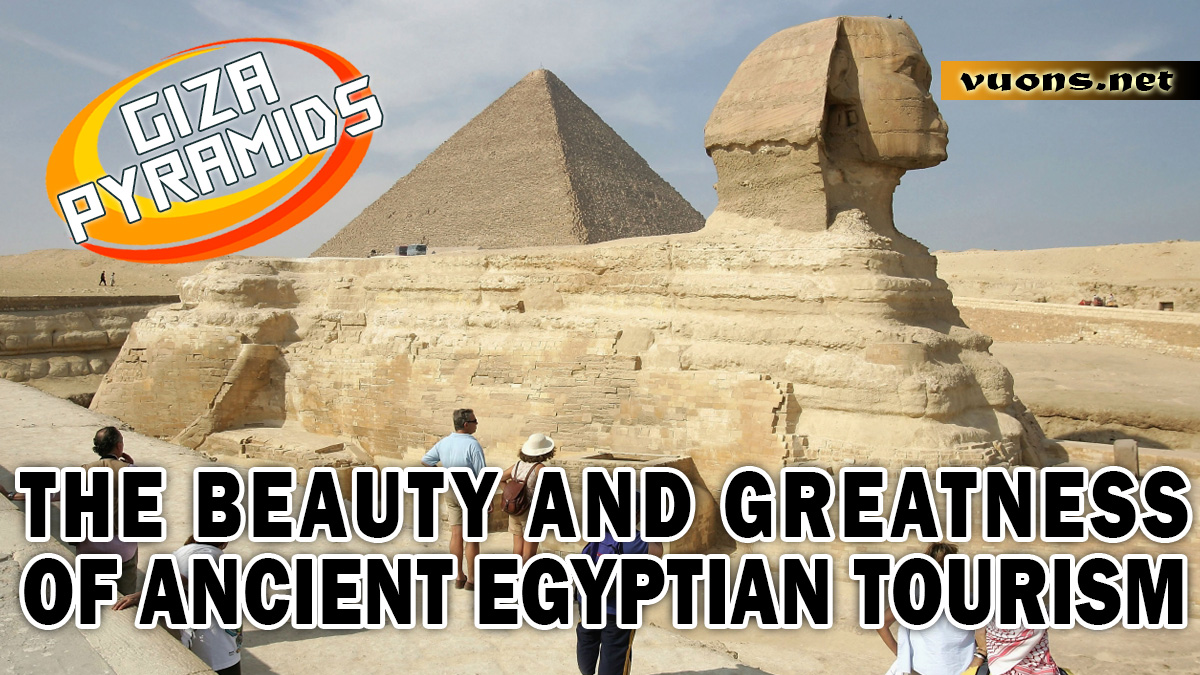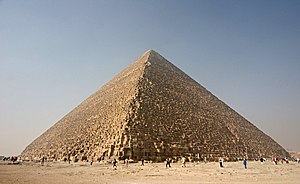Interesting Tour to the Pyramids of Giza
A Brief History of the Great Pyramid of Giza
The Great Pyramid of Giza, known as one of the Seven Wonders of the Ancient World, is a majestic monument that stood tall in the Egyptian desert for more than 4,500 years. This pyramid was built as a tomb for Pharaoh Khufu, ruler of the Fourth Dynasty of Ancient Egypt, and is the largest of the three pyramids in the Giza complex.
A Brief History of the Great Pyramid of Giza includes a construction story filled with extraordinary engineering feats. With an initial height of 146 meters, the Great Pyramid of Giza was the tallest man-made structure in the world for almost 3,800 years. The large stones used to build this pyramid are thought to have come from a quarry several kilometers from the location, and each stone weighs several tonnes.
The construction process of the Great Pyramid of Giza is still a mystery to this day. Experts speculate that tens of thousands of workers, not slaves as is often thought, were involved in the construction of the pyramid. They used simple but effective tools and innovative techniques to move and arrange the large stones.
The pyramid was originally covered with smooth white limestone, which reflected sunlight and made it shine from a distance. However, most of this outer layer has been lost over time, leaving behind the core structure we see today. Apart from its function as a tomb, the Great Pyramid of Giza is also considered a symbol of Pharaoh’s power and immortality.
To this day, the Great Pyramid of Giza continues to attract millions of tourists from around the world, offering them a glimpse of the long-gone glory of Ancient Egyptian civilization. These pyramids remain a stunning testament to humanity’s ability to create something eternal.
The beauty of the Great Sphinx of Giza
The Great Sphinx of Giza is a monumental statue located near the Pyramids of Giza, is one of the most famous icons of ancient Egypt. With the body of a lion and the head of a human, this Sphinx combines strength and wisdom, symbolizing the greatness and authority of the Egyptian ruler. Built around 2500 BC, the Great Sphinx is a stunning and mysterious work of art, depicting Pharaoh Khafre, the ruler of the Fourth Dynasty, who is believed to have built it.
The beauty of the Great Sphinx of Giza lies in its majestic proportions and details. This statue is around 73 meters long and 20 meters high, with its head facing east. Although some parts of this statue were damaged due to erosion and theft, the Sphinx still shows the high artistic and technical skills of its creators.
The Great Sphinx is made of the same limestone as the surrounding pyramids, and was once coated with paint that gave it a bright color. Today, this statue stands in the middle of the desert, surrounded by a pyramid complex, creating a dramatic and stunning view.
The existence of the Great Sphinx of Giza is also surrounded by various legends and myths, which add to the appeal and mysterious aura of this statue. Several stories tell that the Sphinx has magical powers and functions as a guardian for the tombs around it.
Today, the Great Sphinx of Giza continues to attract visitors from all over the world, who come to witness the artistic and historical wonders embedded in this statue. Its beauty and splendor remains a silent witness to the greatness of ancient Egyptian civilization.
Nearby Museums Worth a Visit
When visiting the Pyramids of Giza and the Great Sphinx, don’t miss the opportunity to explore the nearby museums that offer an in-depth look at ancient Egyptian civilization. Nearby Museums Worth a Visit include the Egyptian Museum in Cairo, which is one of the most important archaeological museums in the world.
The Egyptian Museum in Cairo holds more than 120,000 artifacts from various periods of Egyptian history, including a collection of treasures from the famous tomb of Tutankhamun. Here, visitors can see mummies, statues and items that provide insight into life and death in ancient Egypt. This collection not only shows the richness of arts and crafts from the Pharaonic era but also describes body preservation techniques and objects used in daily life and religious rituals.
Apart from the Egyptian Museum, you can also visit the newer National Museum of Egyptian Civilization. The museum displays various collections from across Egypt, including artifacts found in important locations such as Luxor and Aswan. At this museum, visitors can explore interactive exhibits and view various artifacts in a broader historical context.
Both museums provide an educational and immersive experience that complements your visit to the Pyramids of Giza. With information presented thoroughly, you can better understand the wonders you see firsthand and gain greater context about the history and culture of ancient Egypt. Visiting these museums is the perfect way to enrich your Travel experience and delve into the rich history that Egypt has to offer.
Mysteries and Legends Behind the Pyramids of Giza
The Pyramids of Giza, one of the most famous wonders of the ancient world, are known not only for their size and grandeur but also for the mysteries and legends that surround them. The Mysteries and Legends Behind the Pyramids of Giza have captivated researchers and visitors for centuries, creating a mysterious aura that continues to attract attention.
One of the biggest mysteries is how these pyramids were built. The construction technique used is still a matter of debate among archaeologists and historians. Many theories have been put forward, ranging from the use of simple ramps and tools to technology that may be more advanced than expected. In addition, the size of the boulders used, which can reach several tons, adds complexity to this question.
Legends about the Pyramids of Giza often involve ancient beliefs about spiritual power and meaning. One legend states that this pyramid has magical powers and functions as a portal to the world after death. Some ancient Egyptian folk tales also associate pyramids with gods and mystical creatures who were thought to protect the tombs of the pharaohs.
The Great Sphinx of Giza, a huge statue located not far from the pyramids, is also surrounded by various legends. Some myths state that the Sphinx has the ability to provide clues to those who are able to solve the riddles he poses. This legend adds depth to the mystery surrounding the Giza complex.
The existence of the pyramids as burial sites for pharaohs and monuments constructed with extraordinary engineering, along with the various folklore and theories surrounding them, continues to inspire curiosity and awe. The Pyramids of Giza remain an enduring symbol of the greatness and mystery of ancient Egyptian civilization.




